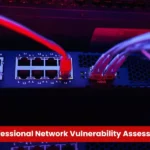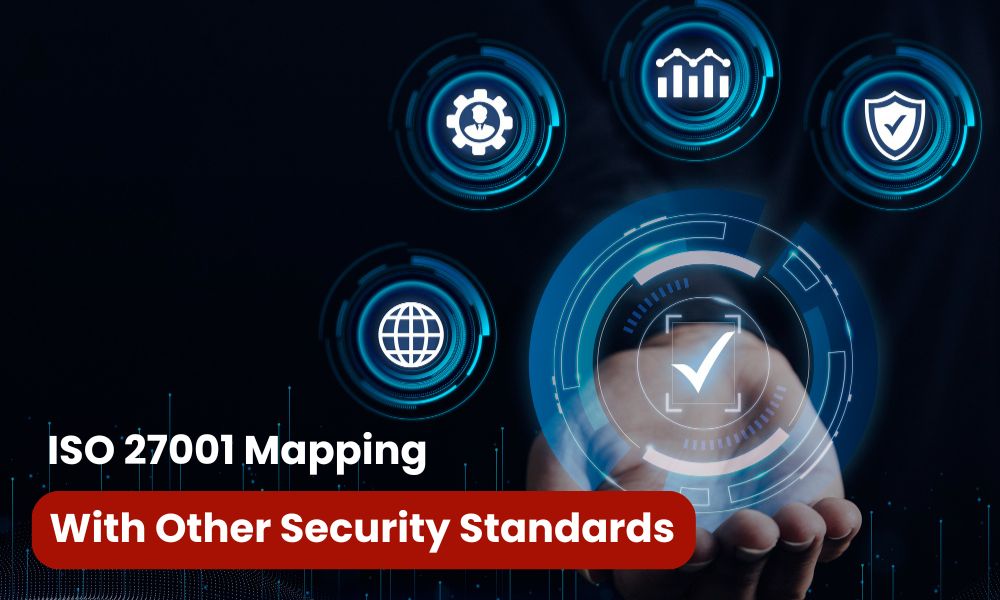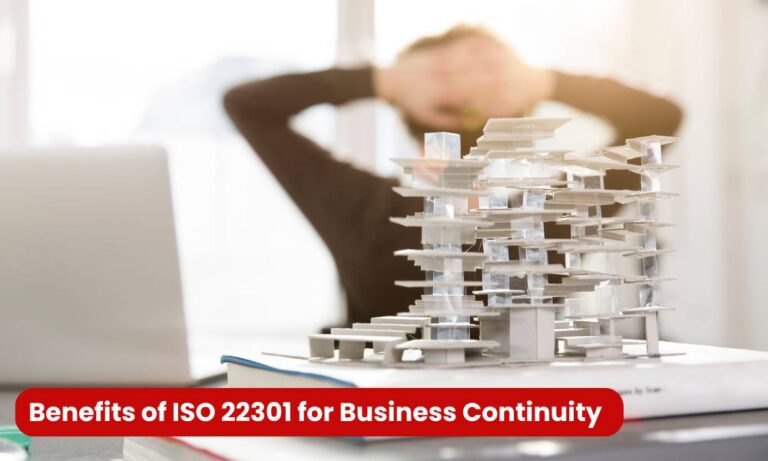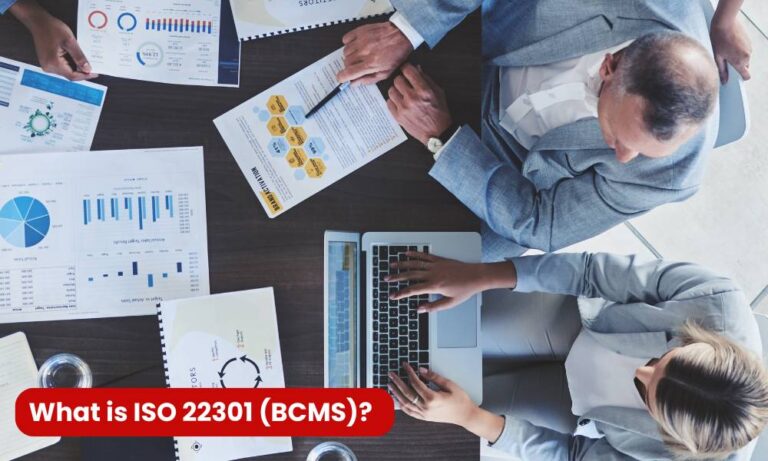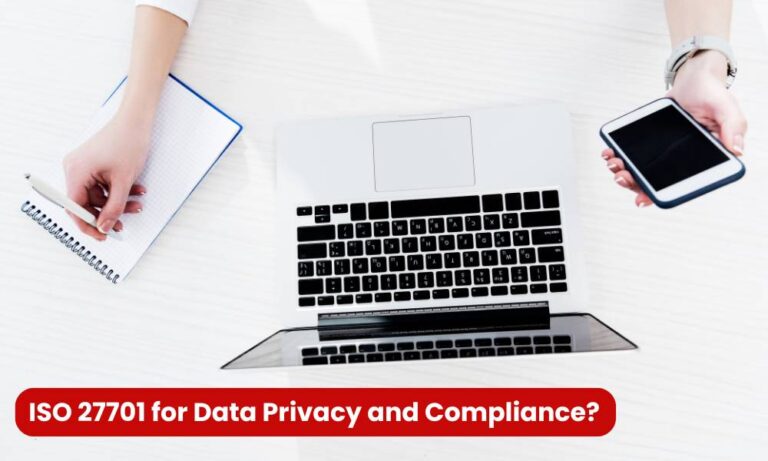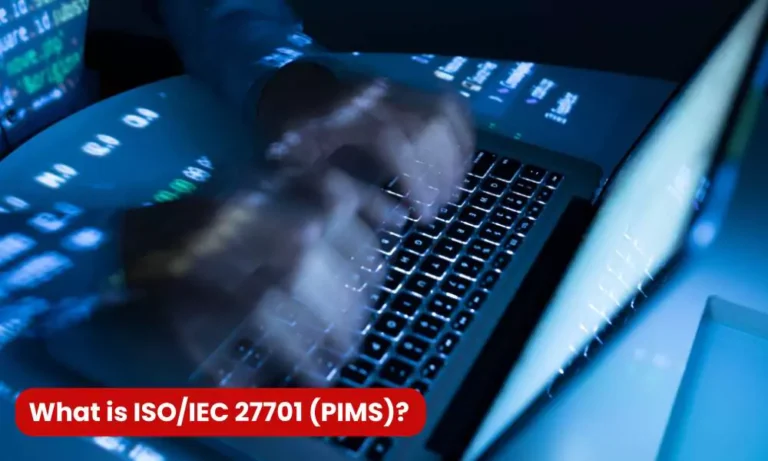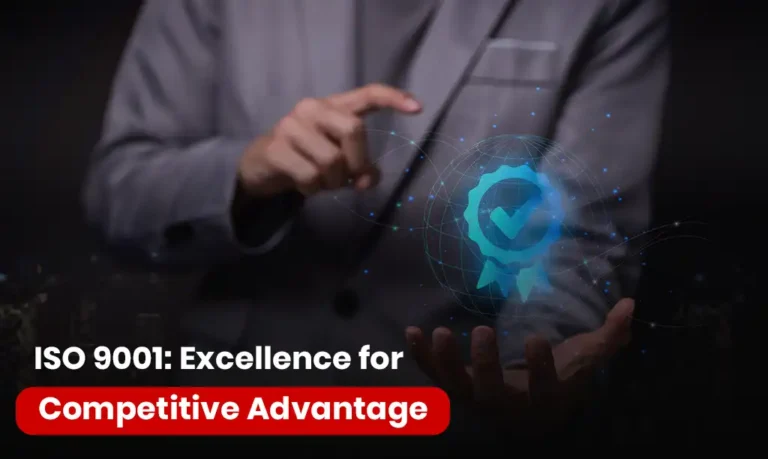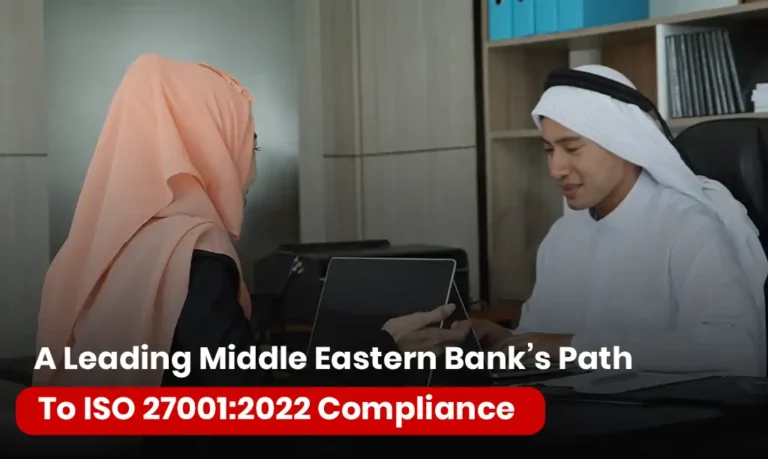U.S. enterprises are facing an ever-growing list of regulations, frameworks, and industry standards that dictate how they must protect sensitive data. From NIST CSF and CMMC to SOC 2, HIPAA, HITRUST, and PCI DSS, organizations must navigate a maze of compliance requirements, often leading to redundancies, inefficiencies, and skyrocketing operational costs.
For companies looking to establish a robust security posture while maintaining compliance across multiple frameworks, mapping ISO 27001 with other standards and integrating in their security posture is not just a best practice – it’s a necessity.
This guide explores how U.S. enterprises can integrate ISO 27001 with other security frameworks, the challenges involved, and the strategic steps to ensure a harmonized and effective cybersecurity program.
The Compliance Overload Challenge
One of the biggest challenges for U.S. businesses is the sheer fragmentation of security and compliance requirements. Different frameworks, each with its own jargon and audit expectations, force organizations to maintain multiple, overlapping security programs.
For example:
- A technology provider serving financial institutions may need to comply with ISO 27001 for global information security, SOC 2 for cloud service assurance, and PCI DSS for payment security.
- A healthcare SaaS company handling patient data must ensure compliance with ISO 27001, HIPAA, and HITRUST while also meeting state-level privacy laws like CCPA.
- A government contractor bidding on Department of Defense projects is required to align with ISO 27001, NIST 800-171, and CMMC for cybersecurity maturity assessments.
With overlapping controls and audit requirements, enterprises often struggle with compliance fatigue, where time, effort, and resources are wasted on redundant security assessments instead of strengthening actual defenses against cyber threats.
ISO 27001 as the Foundation for Unified Security Governance
ISO 27001 offers a structured approach to risk-based security management, making it an ideal foundation for integrating multiple standards. Unlike prescriptive frameworks that list rigid technical controls, ISO 27001 focuses on risk assessment, continuous improvement, and business-driven security, allowing organizations to align their security posture with multiple regulatory requirements under one cohesive strategy.
By implementing ISO 27001 as the backbone of an enterprise security program, organizations can:
- Streamline compliance efforts by mapping ISO 27001 controls to other frameworks like NIST CSF, HIPAA, PCI DSS and SOC 2.
- Reduce audit fatigue by harmonizing documentation, risk assessments, and reporting.
- Improve security governance through centralized policies and risk management frameworks.
- Enhance operational efficiency by eliminating redundant security measures.
The Business Case for Integrating ISO 27001 with U.S. Compliance Standards
Aside from regulatory alignment, integrating ISO 27001 with other standards provides tangible business benefits:
- Cost Savings: Reducing the number of separate security audits lowers compliance costs and resource strain.
- Competitive Edge: Demonstrating alignment with multiple standards builds trust with customers, partners, and regulators.
- Stronger Cyber Resilience: A risk-driven, holistic security approach enables businesses to stay ahead of evolving threats.
As the regulatory environment continues to evolve with stricter enforcement of cybersecurity and data privacy laws, organizations that proactively integrate ISO 27001 with other standards will be better positioned to navigate compliance challenges without compromising on security agility.
Overview of Key U.S. Standards and Frameworks
While ISO 27001 provides a strong foundation for information security management, organizations often need to integrate it with other U.S. specific standards to ensure comprehensive security, risk management, and regulatory adherence. Before diving into integration strategies, let’s examine the most common security and compliance frameworks that U.S. enterprises align with ISO 27001.
1. NIST Cybersecurity Framework (NIST CSF)
- A risk-based security framework widely adopted in the government, and technology companies, financial services, and critical infrastructure sectors.
- Provides five core functions: Identify, Protect, Detect, Respond, and Recover.
- ISO 27001 integration: Many NIST CSF controls overlap with ISO 27001’s Annex A controls, making alignment straightforward. Many enterprises use ISO 27001 as the governance backbone while leveraging NIST CSF for tactical security improvements.
2. SOC 2 (Service Organization Control 2)
- Developed by the American Institute of Certified Public Accountants (AICPA), SOC 2 is a compliance framework focused on customer data security, primarily for cloud service providers, SaaS companies, and IT service firms.
- Based on the five Trust Services Criteria: Security, Availability, Processing Integrity, Confidentiality, and Privacy.
- ISO 27001 integration: ISO 27001’s ISMS provides a strong governance foundation for SOC 2 compliance. While ISO 27001 focuses on organization-wide information security, SOC 2 is more specific to customer data protection, making it beneficial for cloud-based companies to pursue both certifications
3. HIPAA (Health Insurance Portability and Accountability Act)
- Mandatory for Healthcare providers, insurance companies, and any entity handling Protected Health Information (PHI).
- Enforces strict data security, privacy, and breach notification requirements involving PHI.
- ISO 27001 integration: While HIPAA provides a legal framework for protecting healthcare data, it lacks a structured risk management approach. ISO 27001 helps organizations formalize policies, procedures, and risk assessments to meet HIPAA security requirements
4. PCI DSS (Payment Card Industry Data Security Standard)
- Governed by PCI SSC, it is required for all entities that store, process, and/or transmit cardholder data.
- Includes 12 security requirements focused on encryption, access control, security testing and monitoring.
- ISO 27001 integration: PCI DSS is a highly prescriptive framework which enforces technical security controls, whereas ISO 27001 is risk-based governance standard. However, both emphasize access controls, encryption, and monitoring, making it beneficial for enterprises to integrate them for streamlined compliance.
5. Cybersecurity Maturity Model Certification (CMMC)
- Mandatory for contractors and organizations working with the U.S. Department of Defense (DoD), requiring compliance with NIST 800-171 controls.
- Includes five maturity levels, ranging from basic cyber hygiene (Level 1) to advanced security practices (Level 5).
- ISO 27001 integration: Organizations can use ISO 27001’s ISMS as the foundation for CMMC certification. Organizations seeking CMMC certification can use ISO 27001’s governance structure to manage controls efficiently
6. GDPR & CCPA (Global & State-Level Privacy Laws)
- Best for any organization processing personal data of EU citizens (GDPR) or California residents (CCPA).
- GDPR applies to any business handling EU citizens’ personal data, regardless of location. CCPA grants California residents the right to access, delete, and opt out of data collection.
- ISO 27001 integration: While not cybersecurity frameworks, both the General Data Protection Regulation (GDPR) and the California Consumer Privacy Act (CCPA) enforce strict data privacy and consumer rights regulations. ISO 27001’s Annex A controls can support GDPR and CCPA compliance, particularly in areas like data protection policies, access controls, and incident response.
Mapping ISO 27001 to Other Frameworks
Instead of treating each framework as a separate compliance requirement, enterprises can map ISO 27001’s controls to other security standards, streamlining security governance. By identifying commonalities between ISO 27001, NIST CSF, SOC 2, HIPAA, PCI DSS, and CMMC, businesses can reduce redundancies, streamline audits, and enhance overall security governance.
Here’s how ISO 27001 aligns with key U.S. frameworks:
1. Mapping ISO 27001 with NIST Cybersecurity Framework (NIST CSF)
Common Ground:
- Both emphasize risk-based security management rather than prescriptive controls.
- ISO 27001’s Annex A controls align well with NIST CSF’s five core functions (Identify, Protect, Detect, Respond, Recover).
- NIST Special Publication 800-53 (which underpins NIST CSF) maps directly to ISO 27001’s control objectives.
Key Differences:
- NIST CSF is voluntary, while ISO 27001 is certifiable through third-party audits.
- NIST CSF is widely used by government and critical infrastructure sectors, whereas ISO 27001 is globally recognized across industries.
Integration Strategy:
- Organizations can use ISO 27001 for governance and compliance while leveraging NIST CSF for technical security implementations and continuous improvement.
2. ISO 27001 mapping to SOC 2
Common Ground:
- Both require documented security policies, risk assessments, and controls for information protection.
- ISO 27001’s Annex A controls map closely to SOC 2’s Trust Services Criteria (TSC), especially in areas like access control, monitoring, and incident response.
- Both require continuous security monitoring and third-party audits.
Key Differences:
- SOC 2 is specific to service organizations that store/process customer data, while ISO 27001 applies to entire organizations.
- SOC 2’s five Trust Services Criteria (Security, Availability, Processing Integrity, Confidentiality, Privacy) differ slightly from ISO 27001’s broader risk-based approach.
Integration Strategy:
- Organizations seeking both certifications can use ISO 27001 as a foundation to meet SOC 2’s security and confidentiality requirements.
- They should harmonize audits by aligning control documentation across ISO 27001 and SOC 2.
3. ISO 27001 mapping with HIPAA (for Healthcare Organizations)
Common Ground:
- Both require data protection, risk management, and access control mechanisms.
- ISO 27001’s Annex A controls help satisfy HIPAA’s Security Rule requirements.
- Both emphasize incident response and breach notification procedures.
Key Differences:
- HIPAA is a U.S. federal law, while ISO 27001 is an international standard.
- HIPAA focuses on protecting Protected Health Information (PHI), while ISO 27001 covers all types of information security risks.
Integration Strategy:
- Healthcare providers can use ISO 27001 to establish a structured risk management program for HIPAA compliance.
- Gap assessments can help organizations map ISO 27001 controls to HIPAA’s administrative, technical, and physical safeguards.
4. Mapping ISO 27001 to PCI DSS requirements (for Payment Security)
Common Ground:
- Both require strong access controls, encryption, and security monitoring.
- ISO 27001’s Annex A controls align with many PCI DSS requirements, particularly in network security and incident response.
- Both mandate risk assessments and security awareness training.
Key Differences:
- PCI DSS is highly prescriptive, requiring specific technical controls for payment card data security.
- ISO 27001 is flexible and risk-based, allowing organizations to implement security controls that fit their business model.
Integration Strategy:
- Businesses that handle payment data can use ISO 27001 to manage governance and risk while implementing PCI DSS controls for payment security.
- Streamlining audits by leveraging common controls between the two frameworks saves time and costs.
5. ISO 27001 vs. CMMC (for Government Contractors)
Common Ground:
- Both emphasize risk management, incident response, and continuous security monitoring.
- ISO 27001’s Annex A controls align with many CMMC Level 3 requirements, such as identity and access management, system integrity, and security awareness training.
- Both require third-party assessments for certification.
Key Differences:
- CMMC is mandatory for DoD contractors, while ISO 27001 is voluntary but widely recognized.
- CMMC has five maturity levels, whereas ISO 27001 is a single-tier certification.
Integration Strategy:
- Defense contractors can use ISO 27001 as a baseline and map their ISMS to CMMC requirements.
- Automating compliance tracking using Governance, Risk, and Compliance (GRC) tools can streamline audits for both standards.
Benefits of ISO 27001 Mapping with other Security Standards
Here’s why adopting an integrated approach to compliance is a game-changer for U.S. enterprises.
1. Streamlined Compliance and Reduced Audit Fatigue
- Eliminates redundant security controls by mapping ISO 27001 controls across multiple frameworks.
- Reduces the burden on security teams, as policies and procedures only need to be documented once.
- Simplifies audit preparation, as evidence collection and reporting can be harmonized.
- Lowers the risk of non-compliance by maintaining a single source of truth for security governance.
Example: A healthcare SaaS provider aligning ISO 27001 with HIPAA and SOC 2 can avoid redundant security audits by leveraging a single security framework for all three requirements.
2. Cost Savings Through Efficiency and Optimization
- Cuts audit, security tool implementations, staff training expenses by consolidating assessments into a unified certification strategy.
- Optimizes security investments by leveraging ISO 27001’s risk-based approach to avoid unnecessary spending.
- Minimizes operational disruption, as security teams don’t have to reinvent processes for each compliance framework.
- Eliminates the need for separate compliance teams by centralizing security governance.
Example: A financial institution required to comply with ISO 27001, PCI DSS, and SOC 2 can save costs by using one risk management process to cover all three frameworks, rather than running three separate compliance programs.
3. Stronger Security Posture and Risk Management
- Ensure a consistent security baseline across the organization.
- Identify and mitigate risks more effectively by leveraging risk assessments from multiple frameworks.
- Implement stronger security controls by integrating best practices from various standards (e.g., NIST’s threat detection and PCI DSS’s encryption controls).
- Enhance incident response and resilience by unifying security monitoring and breach notification requirements.
Example: A DoD contractor integrating ISO 27001 with CMMC can improve its incident response capabilities by aligning continuous monitoring and security logging across both frameworks.
4. Competitive Advantage and Market Trust
- Improves credibility with partners, regulators, and customers by showcasing strong security governance.
- Speeds up sales and contract approvals by having an integrated compliance strategy in place.
- Enhances brand reputation by preventing security breaches and regulatory penalties.
- Provides flexibility to expand into new markets that require compliance with multiple standards.
Example: A SaaS provider that holds ISO 27001 and SOC 2 certifications will have an advantage when negotiating contracts with enterprise customers that demand high security standards.
5. Future-Proofing Against Regulatory Changes
- Reduces the impact of new security regulations by having a flexible security management system.
- Allows organizations to easily adopt new compliance requirements (e.g., emerging privacy laws like CPRA).
- Enables continuous improvement by aligning security governance with evolving threat landscapes.
- Positions organizations for global compliance expansion if they need to meet new international standards.
Example: A tech company already certified for ISO 27001 and SOC 2 can easily adapt to new privacy laws like CPRA and GDPR by modifying its existing risk-based security program.
Conclusion
U.S. enterprises must embrace a unified security strategy to efficiently manage compliance with multiple standards. ISO 27001 serves as a foundational framework, offering a structured approach to risk management, security controls, and continuous improvement. By mapping ISO 27001 to NIST CSF, SOC 2, HIPAA, PCI DSS, and CMMC, organizations can streamline compliance, reduce redundancy, and enhance security resilience.
| Secure your business with a seamless ISO 27001 compliance integration. Contact Ampcus Cyber today! |
Enjoyed reading this blog? Stay updated with our latest exclusive content by following us on Twitter and LinkedIn.





